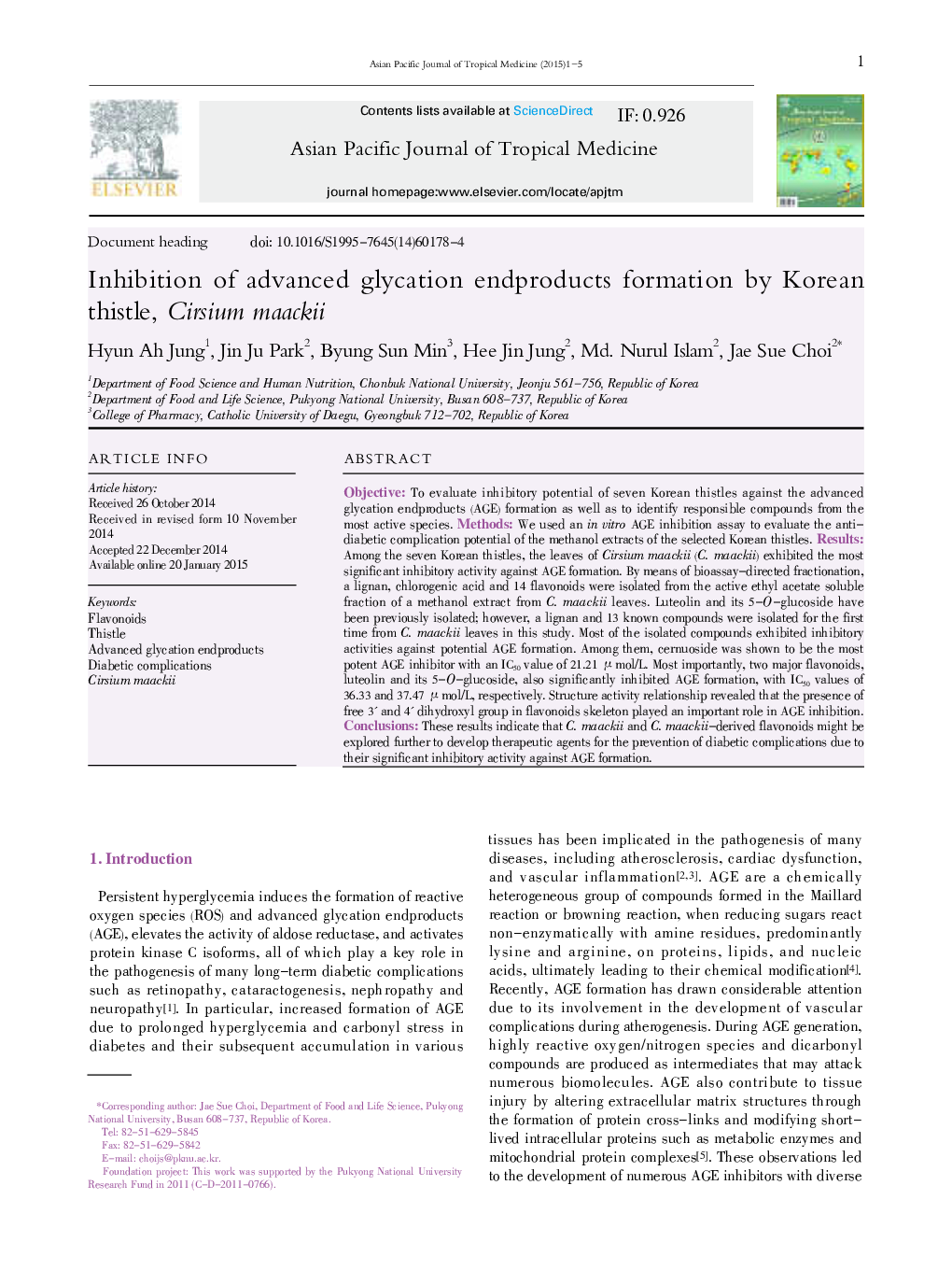| کد مقاله | کد نشریه | سال انتشار | مقاله انگلیسی | نسخه تمام متن |
|---|---|---|---|---|
| 3455466 | 1596020 | 2015 | 5 صفحه PDF | دانلود رایگان |

ObjectiveTo evaluate inhibitory potential of seven Korean thistles against the advanced glycation endproducts (AGE) formation as well as to identify responsible compounds from the most active species.MethodsWe used an in vitro AGE inhibition assay to evaluate the anti–diabetic complication potential of the methanol extracts of the selected Korean thistles.ResultsAmong the seven Korean thistles, the leaves of Cirsium maackii (C. maackii) exhibited the most significant inhibitory activity against AGE formation. By means of bioassay–directed fractionation, a lignan, chlorogenic acid and 14 flavonoids were isolated from the active ethyl acetate soluble fraction of a methanol extract from C. maackii leaves. Luteolin and its 5–O–glucoside have been previously isolated; however, a lignan and 13 known compounds were isolated for the first time from C. maackii leaves in this study. Most of the isolated compounds exhibited inhibitory activities against potential AGE formation. Among them, cernuoside was shown to be the most potent AGE inhibitor with an IC50 value of 21.21 μ mol/L. Most importantly, two major flavonoids, luteolin and its 5–O–glucoside, also significantly inhibited AGE formation, with IC50 values of 36.33 and 37.47 μ mol/L, respectively. Structure activity relationship revealed that the presence of free 3′ and 4′ dihydroxyl group in flavonoids skeleton played an important role in AGE inhibition.ConclusionsThese results indicate that C. maackii and C. maackii–derived flavonoids might be explored further to develop therapeutic agents for the prevention of diabetic complications due to their significant inhibitory activity against AGE formation.
Journal: Asian Pacific Journal of Tropical Medicine - Volume 8, Issue 1, January 2015, Pages 1-5